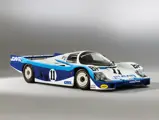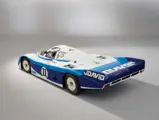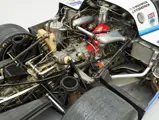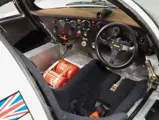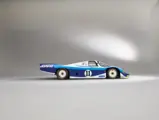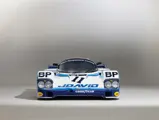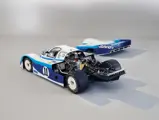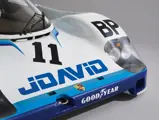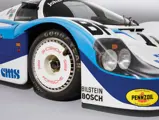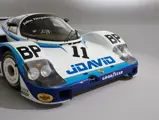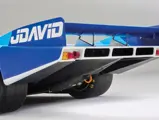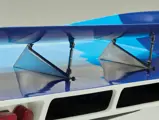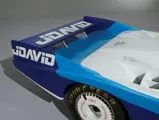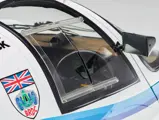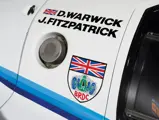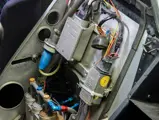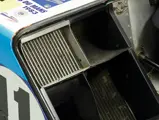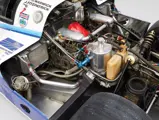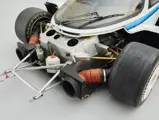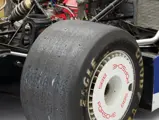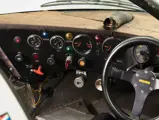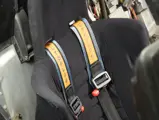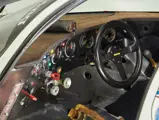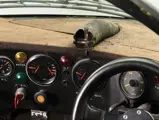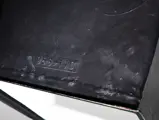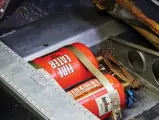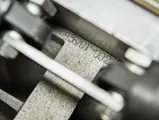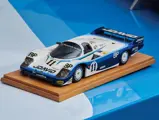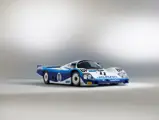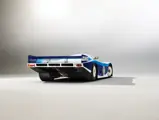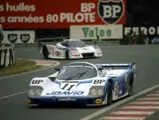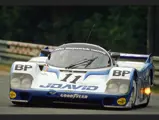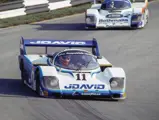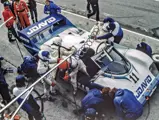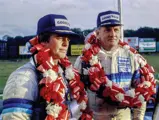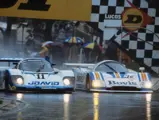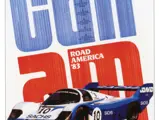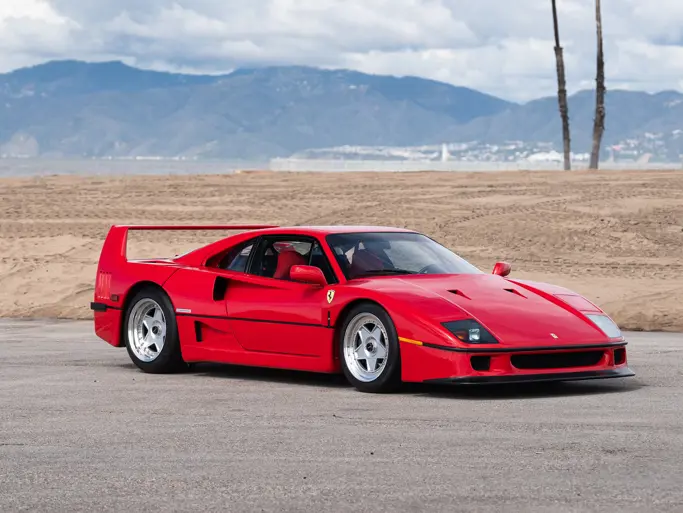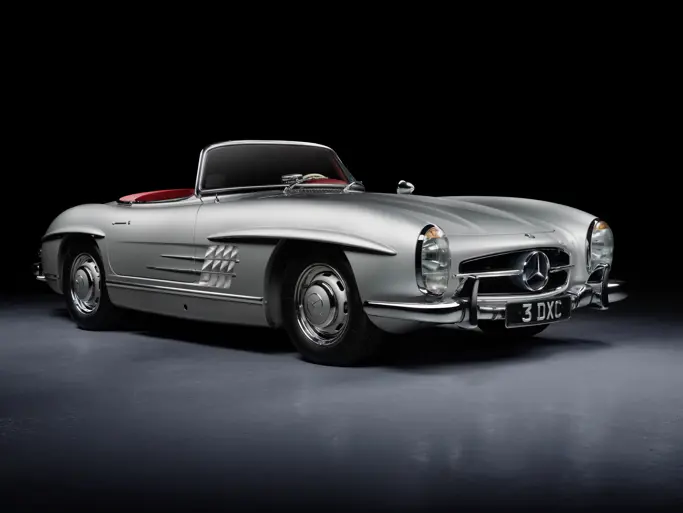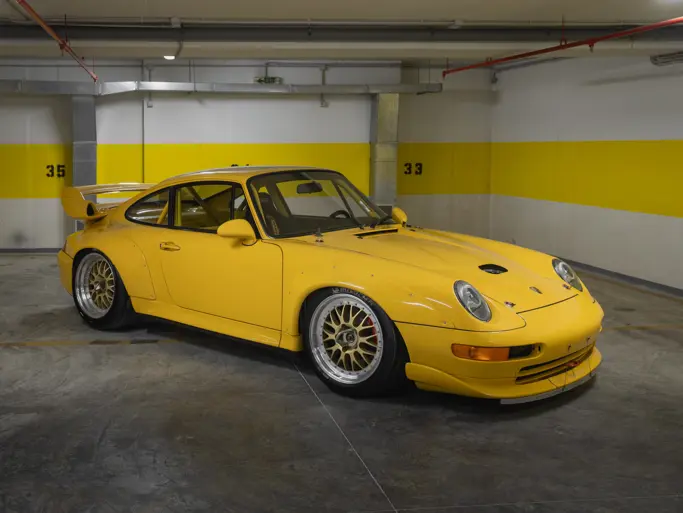Monterey 2021
1983 Porsche 956 Group C
{{lr.item.text}}
$4,500,000 - $6,000,000 USD | Not Sold
 | Monterey, California
| Monterey, California
{{internetCurrentBid}}
{{internetTimeLeft}}

- Overall winner of the 1983 Brands Hatch 1000 KM and 1983 Can-Am Road America
- 24 Hours of Le Mans competitor in 1983 and 1984
- Successful racing history with the legendary John Fitzpatrick Racing; the sole 956 example to compete, and win, on American soil in-period
- One of just two privateer-delivered 956 to beat the Rothmans Porsche factory team 956s
- The most original surviving example of the nine WEC privateer 956s; well-documented, having had only three private owners
- Featured in Ultimate John Fitzpatrick Group C Porsches: The Definitive History by Mark Cole
PORSCHE TYPE 956
Porsche’s dominance of international prototype sports car racing in the early 1970s faced new challenges as other manufacturers upped their game. The incredible five-liter, 12-cylinder normally aspirated 917s had been regulated out of existence, replaced by the open-topped 936 that utilized a 2.65-liter turbocharged flat-six, originally created for Porsche’s short-lived Indianapolis project. This engine, designated the 935/76, gave Porsche a third consecutive victory at Le Mans in 1981.
Then, at the end of the 1981 racing season, the rules changed. The FIA replaced Groups 1 through 7 with new categories: A, B, and C, with Prototypes falling into the latter. Although rules for these new Prototypes were loose, there were limits on their size and fuel consumption. The new regulations also demanded that the forward-most section of their undersides be flat, as to limit their ground-effects capability.
Within two weeks of the announcement, Porsche began design work on its first new prototype race car in a decade, utilizing a monocoque type chassis for the first time. The team comprised of development engineer Norbert Singer, engine specialist Valentin Schäffer, body/chassis engineer Horst Reitter, and racing manager Peter Falk. They gave us arguably the most successful endurance racing car in history.
The new race chassis—designated Type 956—would be based on a bonded and riveted sheet-aluminum monocoque. To this monocoque were attached the front and rear suspension units. The design allowed most of the rear suspension to be moved out of the airstream. Porsche engineers then attacked the “flat under-tray” rule by creating large under-floor tunnels, or venturis, that began behind the flat portion and extended to the tail. When combined with a new wind-cheating carbon-reinforced Kevlar body and adjustable rear wing, the 956 generated immense downforce.
Schäffer’s goal was ensuring that the 935/76 engine, with water-cooled four-valve heads welded to its air-cooled cylinders, could maintain its roughly 600 brake horsepower output and still meet the new fuel consumption standards. Writing for Porsche Year, Bob Garretson remarked that by employing twin KKK turbochargers on moderate boost, mechanical fuel injection, and a carefully calibrated Bosch ignition and fuel management system, the engine easily met both goals.
By mid-1981, a 1/5-scale model was ready for wind-tunnel testing and incredibly, the first chassis was ready for track testing at Weissach in March 1982. Jürgen Barth, factory test driver and Director of Customer Racing, said that after just three fast laps, he knew he was at the wheel of “a superb car, enormously powerful with handling that one only dreams of.”
Production promptly began; there would eventually be a total of 25 constructed for the factory team and then customer sales through 1985. They would prove tremendously successful in the WEC, with the 1982 season highlighted by a 1-2-3 finish at Le Mans. The factory team returned to Le Mans in 1983, again with three entries sponsored by Rothmans and supported by eight privateers. Again, the 956s proved nearly unbeatable, sweeping the top eight finishing positions, plus 10th. That resulted in a famous factory poster that admitted “Nobody’s Perfect!”
CHASSIS NUMBER 956-110
The wonderful example offered here, chassis 956-110, was purchased new in May 1983 by John Fitzpatrick Racing (JFR) and delivered just prior to that year’s Le Mans effort. With backing by investment house JDavid and Skoal Tobacco, Fitzpatrick, Dieter Quester, and David Hobbs started 11th, and worked their way to 3rd overall. Unfortunately, a fuel pump failure forced the car to drop out in the 10th hour, the only customer 956 that did not finish. Not deterred, Fitzpatrick drove 956-110 to a strong 4th place finish at the Norisring Trophy race in July 1983, after starting 9th.
Two weeks later, 956-110 was in the U.S., but because IMSA had banned the 956 on grounds that the pedal box was placed too far forward, JFR decided to run a portion of the SCCA’s Canadian-American Challenge series while using their 935 in IMSA contests. At Road America, Fitzpatrick qualified 956-110 on the pole and romped to an easy win, beating a Chevrolet-powered Frisbee by 12 seconds. At Mosport in Canada on 11 September, Fitzpatrick started 5th and finished on the podium in 3rd after a stirring drive.
JDAVID VS. GOLIATH
Then it was back to Europe and the Brands Hatch 1000 KM. Fitzpatrick and co-driver Derek Warwick put the car 4th on the grid, but after an intense battle in the wet with the Rothmans 956 of Derek Bell and Stefan Bellof, 956-110 pulled away and won by a full lap. This was only the second time a non-factory 956 had won a 1,000-kilometer Championship race in a head-to-head battle with the pair of Works Rothmans entries, and it would also be the last.
Adrian Hamilton approached John Fitzpatrick after the Brands Hatch win and stated that he would love to buy the 956 on behalf of Lord Paul Vestey. The car continued to run with JFR until the end of the season.
A month later at Imola, also in the rain, the Fitzpatrick entry qualified 5th and finished 2nd after leading much of the contest. Another 1,000-kilometer endurance race at Mugello saw 956-110, shared by Fitzpatrick, Hobbs, and Thierry Boutsen, start from 4th on the grid and finish 3rd. It was off to South Africa in early December and an unsatisfactory result. Hobbs, taking over for Boutsen and Desiré Wilson, was caught out by a sudden rain shower on a slow corner and went into the catch fencing, resulting in a rare DNF. On 23 April, Fitzpatrick entered three cars at the Monza 1000 KM, putting Rupert Keegan and Guy Edwards behind the wheel of 956-110. Their entry, along with several other Porsche cars, failed to finish the race. At Silverstone on 13 May, 956-110 was again wearing # 55 Skoal Bandit livery. Still shared by Rupert Keegan and Guy Edwards, the car qualified 10th and finished on the podium with an impressive 3rd.
Having started its career at Le Mans, 956-110 would compete there for a second time in 1984. Then entered by Lord Vestey, variously described as the quintessential gentleman driver and one of the world’s great classic collectors. Lord Vestey retained Adrian Hamilton as team manager and hired Charles Ivey in London to prepare and run the car for them. Ivey brought in Chris Craft, Alain de Cadenet, and Australian touring car champion Alan Grice to share the driving. Wearing the elegant silver and black livery of Rollei Cameras, the car showed great potential, but unfortunately retired on Sunday morning after moving as high as 11th place overall. Le Mans would be 956-110’s last race; it was entered at Imola for Hobbs and Boutsen but did not arrive.
Soon afterward, the car was returned to Charles Ivey to be rebuilt as necessary and put back into the 1983 JDavid livery, retaining the LM long-tail body from its last and final race in June 1984. Soon afterward, the car was sold to California enthusiast and collector Jamey Mazzotta. Under his ownership, this 956 appeared at the 1990 Porsche Parade in Monterey, California.
CONTEMPORARY HISTORY
During the consignor’s first visit to Pebble Beach in 2002, he met Adrian Hamilton, and learned that Mazzotta might consider selling the 956. The purchase was finalized on 5 September and chassis 956-110 was delivered to Oakland, California, in early December for shipment. The car arrived in the UK on 18 January 2003, where it joined the consignor’s important Historic Porsche Collection.
The consignor states that the engine was completely refreshed several years ago and has accrued zero operating hours since. The engine work included installation of an OEM 3.2-liter crankshaft, bringing displacement to 3.0 liters, an upgrade commonly carried out in period. An original 2.65 crank is included within the sale. The engine retains its correct 1983 mechanical fuel injection. The consignor states that the gearbox, no. 956/01-002, and the rest of the running gear, were not rebuilt at the same time as the engine, as those tasks are relatively straightforward and the components more time-sensitive regarding crack-testing.
The creation and racing success of the Type 956 strains credulity. As Andrew Frankel wrote for GT – Purely Porsche in 2012, this design proved nearly perfect right out of the box. “Six months before its scheduled debut at Le Mans in 1982, not a single 956 had even started to be built. Three months before the race, not a single 956 had so much as turned a wheel under its own power. Yet the 956 made its racing debut over a month early at Silverstone on May 16.”
Underscoring the 956’s abilities, the late Stefan Bellof established what was thought to be an unbeatable lap record in qualifying for the 1983 Nürburgring 1000 KM. That record stood for 35 years, until it was finally bested by the Porsche 919 Evo Hybrid in 2018 in a specialized attempt to dethrone the decades-old record.
Today, 956-110 is offered in its full 1983 Le Mans bodywork with JDavid livery. Supplied with extensive documentation, and featured prominently in Ultimate John Fitzpatrick Group C Porsches: The Definitive History by Mark Cole, this wonderful veteran of Porsche’s hugely successful foray into ground-effects prototype racing is ready for concours or museum display; for someone willing to again explore its phenomenal capabilities, 956-110 could be prepared for a return to racing, as any vintage event would be thrilled to have it lined up on the grid.
For a more comprehensive history of 956-110, including its full racing career, please visit the consignor’s website at jdavidporsche.com.

